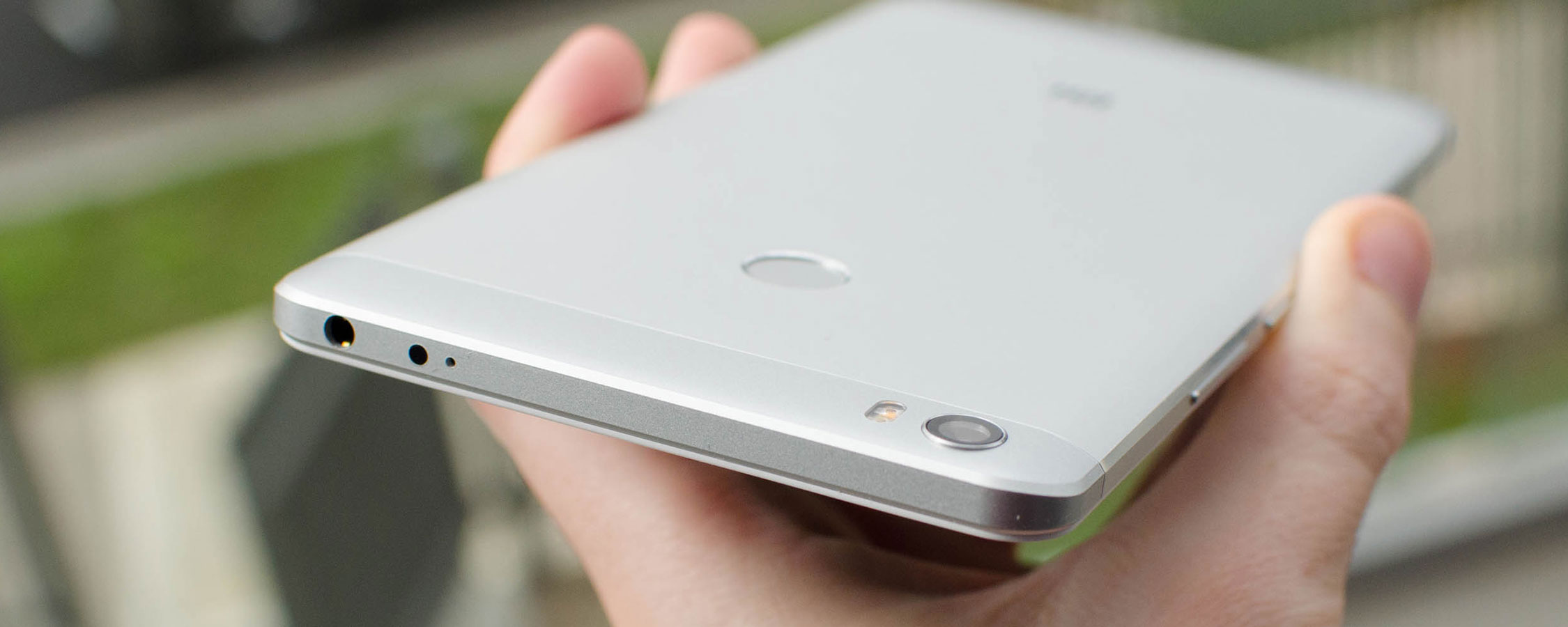Hardware Overview and System Performance
There are four variants of the Xiaomi Mi Max in total, which are based around increasing amounts of internal storage. However, there are some small changes to the SoC and RAM used in each model, so I've outlined the various models and their prices at Gearbest below:
- 128 GB storage - Snapdragon 652 - 4 GB RAM - $350
- 64 GB storage - Snapdragon 652 - 3 GB RAM - $260
- 32 GB storage - Snapdragon 650 - 3GB RAM - $240 - Reviewed
- 16 GB storage - Snapdragon 650 - 2GB RAM - $190
Clearly the best value model here is the 64GB variant, which features an upgrade on the 32GB unit in both storage and SoC for just $10. Alas, I have been sent the 32GB model to review, so my opinions on performance are based on the slightly slower Snapdragon 650 SoC.
The Qualcomm Snapdragon 650 is a hexa-core design featuring two ARM Cortex-A72 CPU cores clocked at 1.8 GHz alongside four Cortex-A53 cores at 1.4 GHz. The A72 core design is an architectural evolution of the Cortex-A57, which is ARM's previous-generation performance CPU core. This essentially means that the A72 cores in the Snapdragon 650 act as the 'big' half of the big.LITTLE design, and provide a significant upgrade on the 'big' Cortex-A53 cluster seen in the Snapdragon 61x series.
ARM states that the A72 is somewhere around 35% faster than the Cortex-A57 when factoring in a 200 MHz clock speed boost moving to A72 (and yes, ARM's direct comparison metrics aren't ideal). On an equivalent manufacturing node, and this is key as the S61x was built on the same 28nm node as the S650, we're also seeing a 20% reduction in power consumption moving from A57 to A72.
The Snapdragon 650 also brings a new GPU: the Adreno 510, which is designed for 1440p applications. Qualcomm keeps very quiet about the improvements they've made to their custom GPUs, so all we really know is that the Adreno 510 is clocked at 550 MHz in the S650 and it should provide a significant performance advantage over the Adreno 405 that came before it.
There are other improvements to the Snapdragon 650 as well. The memory controller has been upgraded to a 64-bit LPDDR3 design at 933 MHz, providing 14.9 GB/s of bandwidth. The DSP is now a Hexagon V56, and the integrated modem has been bumped up to an Qualcomm's X8 LTE, falling in line with the Snapdragon 617. There's also support for up to 4K encode and decode in H.264 and HEVC formats.
In the larger capacity models, the Snapdragon 652 provides an extra two Cortex-A72 cores at the same 1.8 GHz clock speed, bringing the overall SoC up to an octa-core design (4x A72 and 4x A53). This is the only difference between the S652 and S650.
As the Xiaomi Mi Max primarily targets Asian markets, there is only support for 7 LTE bands and 4 HSPA+ bands. The Mi Max should work well in Europe and Asia, but there is very limited support in North America, so potential buyers should check their carrier's bands before purchasing. The Mi Max also supports Wi-Fi 802.11a/b/g/n/ac on 2.4 and 5.0 GHz, Bluetooth 4.2, and A-GNSS+BDS. The big omission here is NFC, which I feel should be included in a device at this price.
I was generally very impressed with the performance of the Snapdragon 650 and the Xiaomi Mi Max. This handset feels fast to use, and a noticeable step above Snapdragon 61x devices that I've had hands-on time with recently.
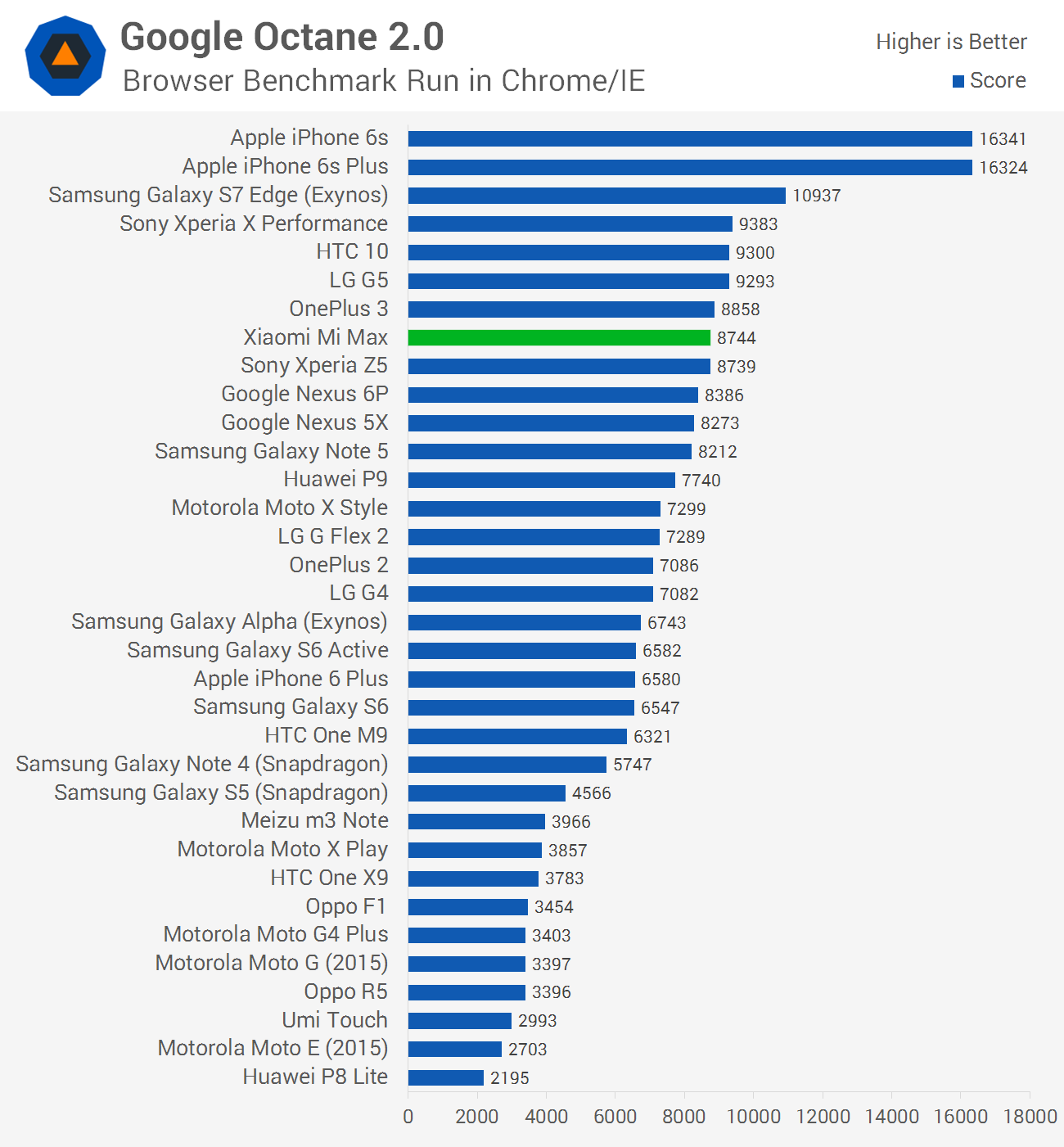
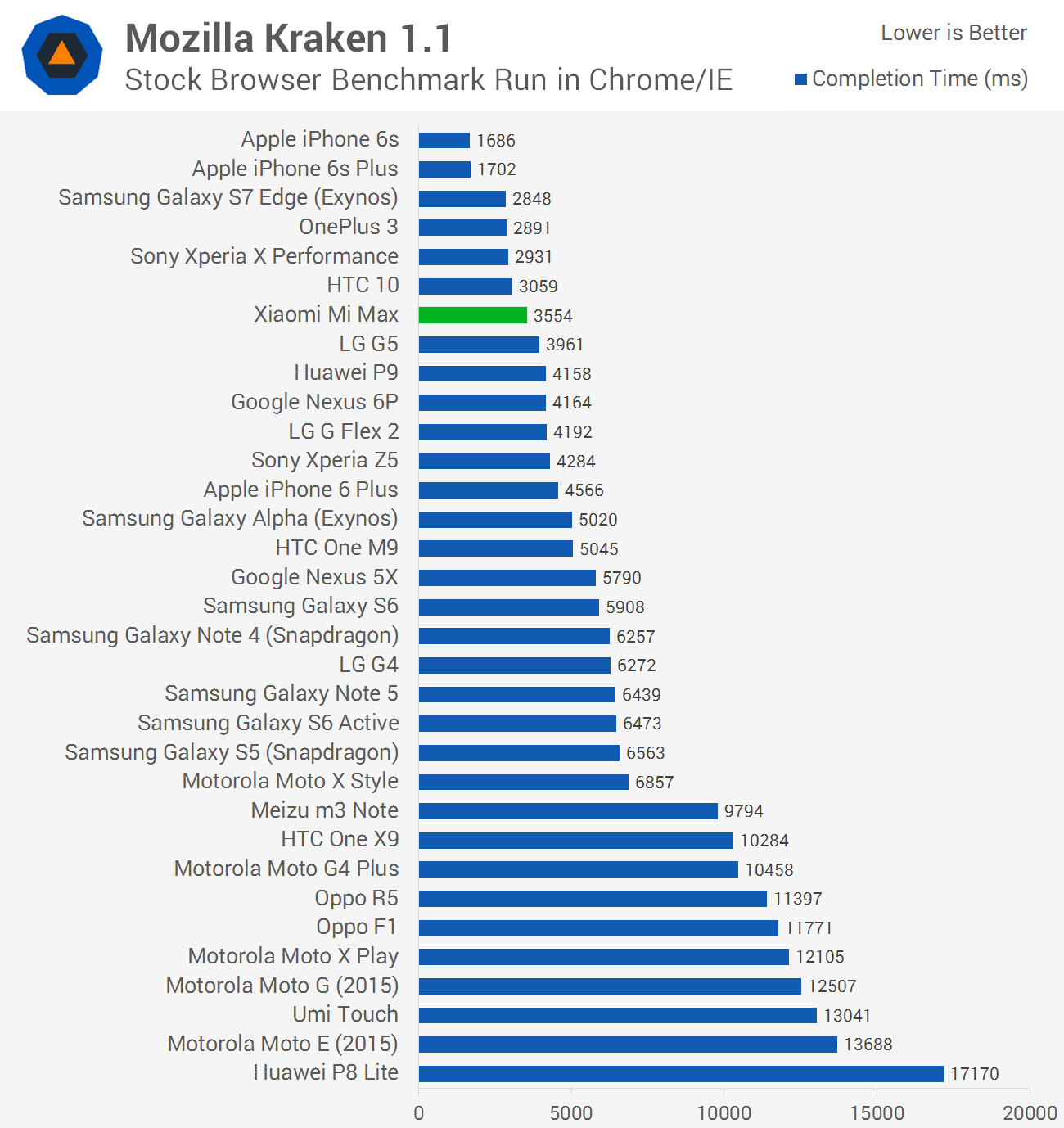
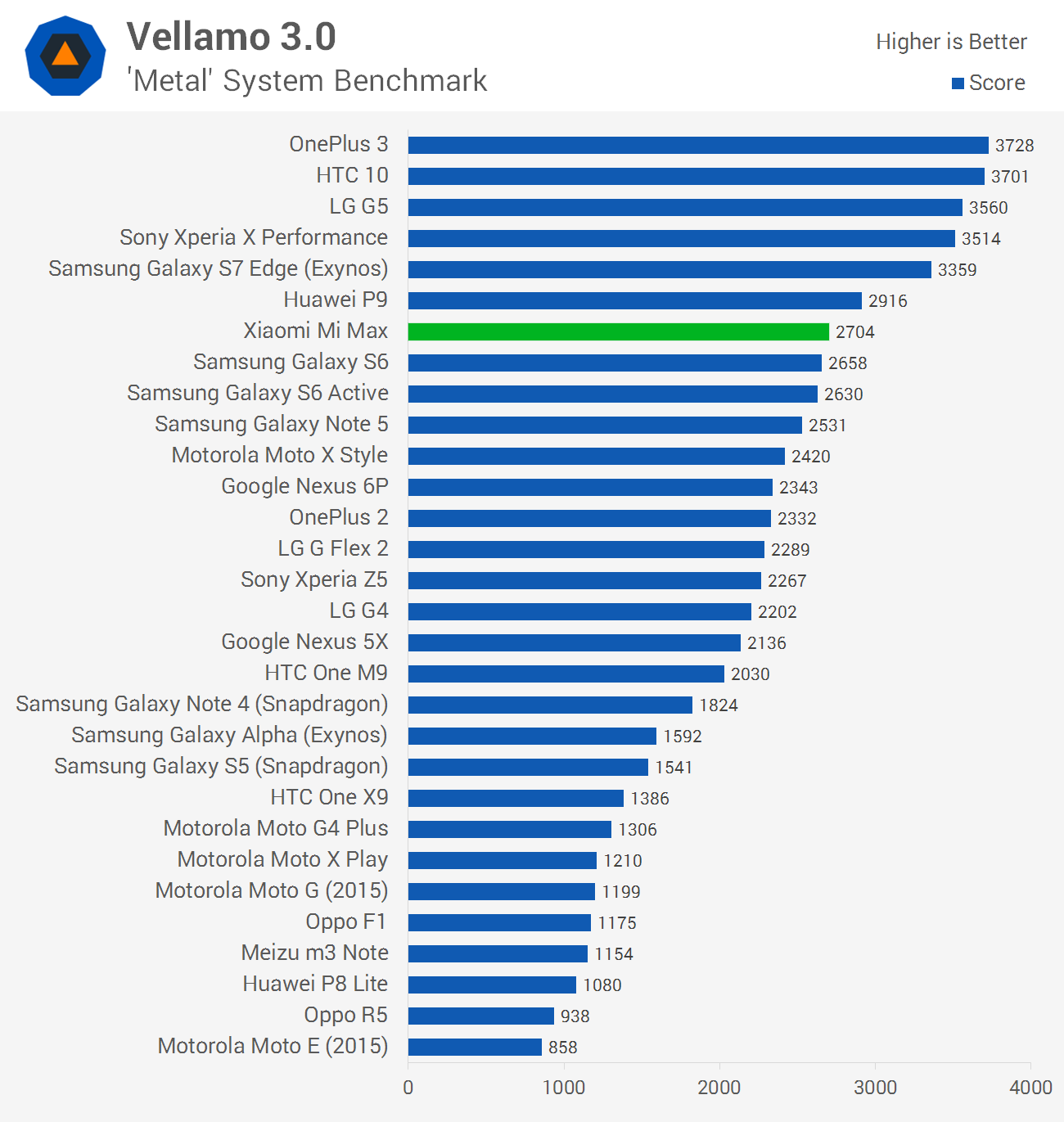
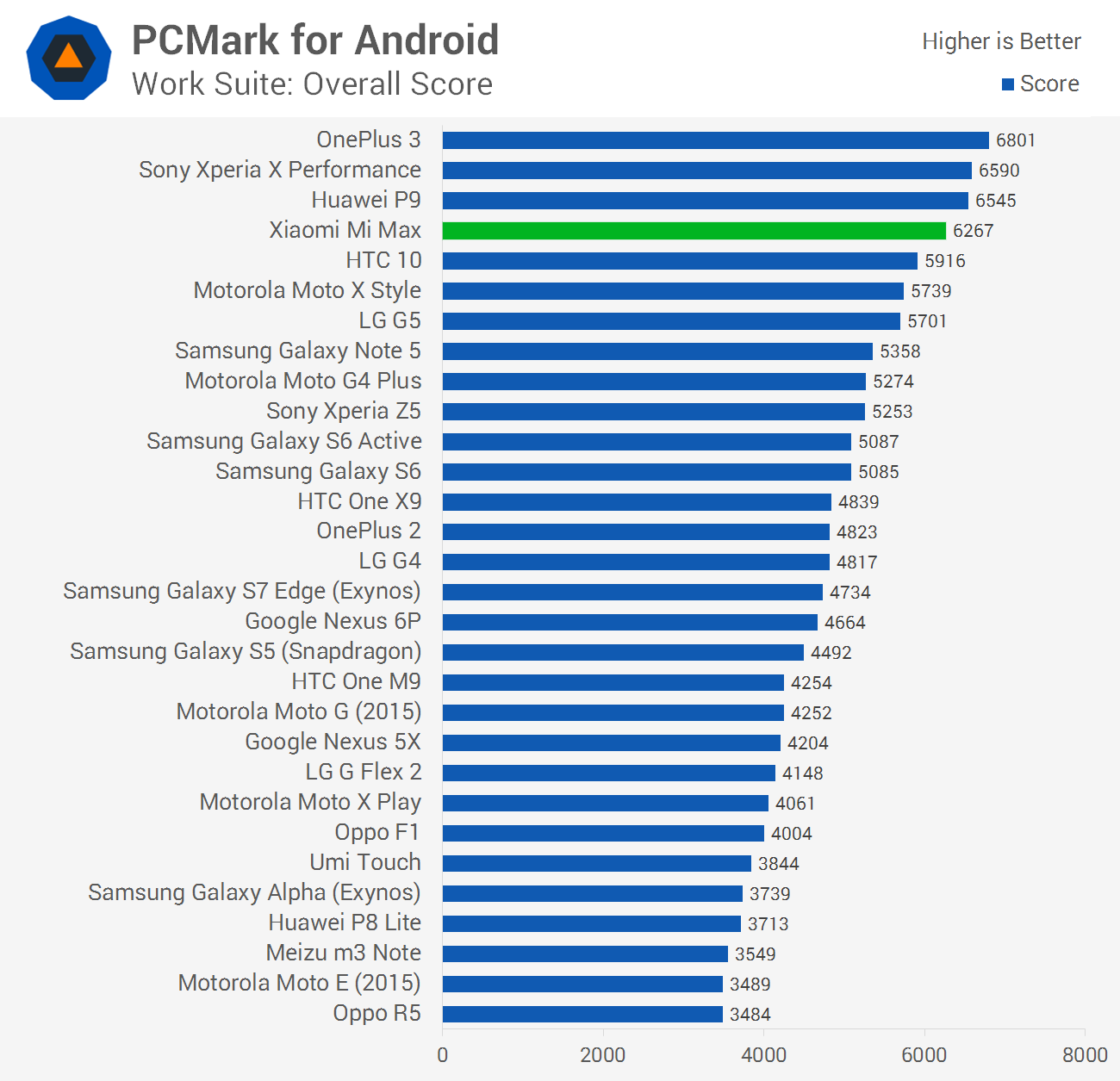
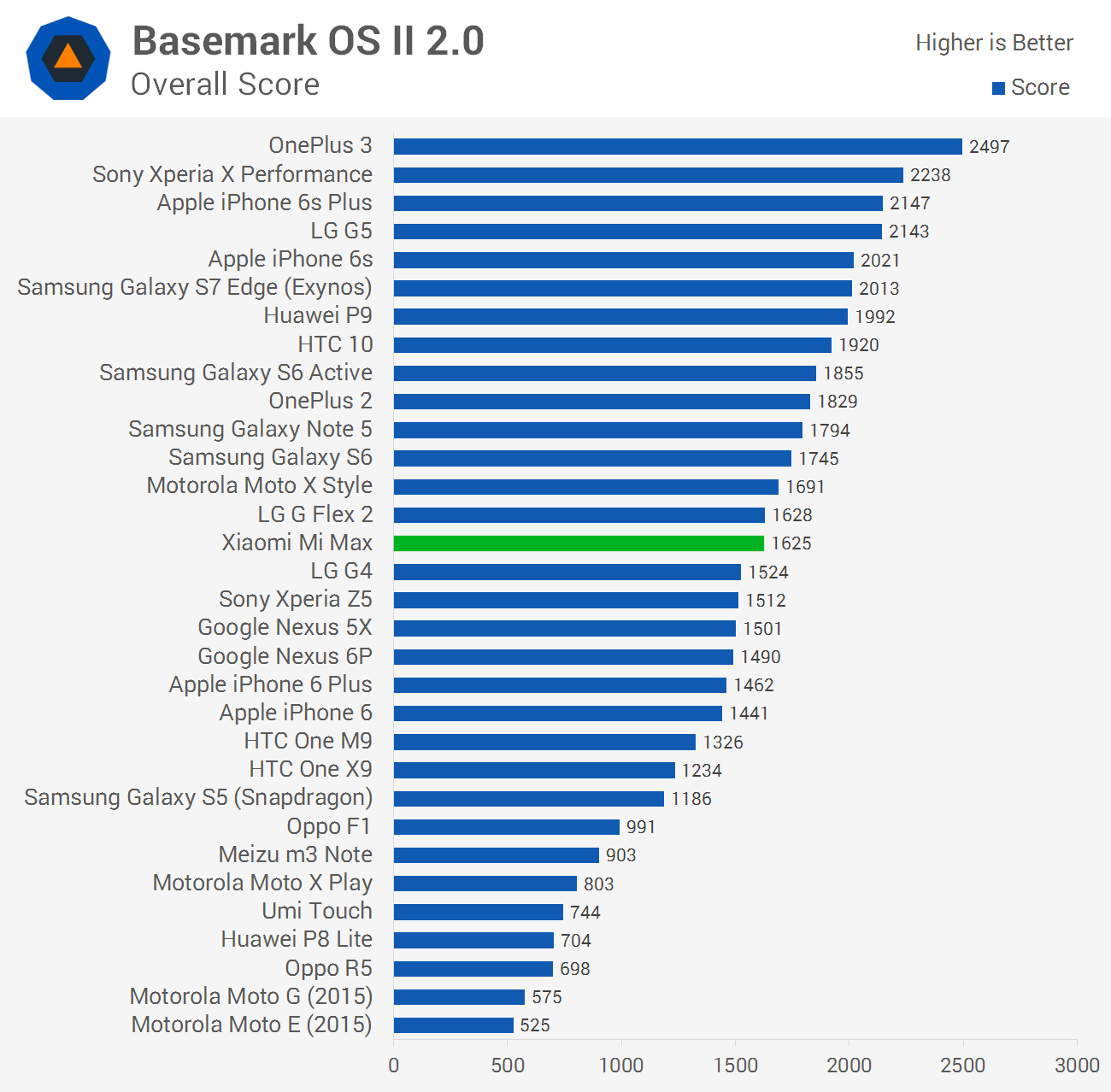
The Snapdragon 650 provides a significant performance increase on the Snapdragon 617. The Mi Max is a good 63 percent faster on average than the S617-powered Moto G4 Plus in CPU-bound workloads, and across all benchmarks the Mi Max was 95 percent faster. Even though the S650 features two fewer cores, the combined performance improvement of better IPC and a 20% clock speed increase makes this newer SoC much faster, especially in web benchmarks.
The Mi Max also crushes the Snapdragon 410-powered Moto G 2015, and comfortably beats the HTC One X9 with its MediaTek Helio X10 SoC by 49% in CPU-bound workloads.
I was especially impressed with the performance of the S650 compared to Qualcomm's Snapdragon 8xx-series parts. The Mi Max is a good 32% faster in CPU tests than the Snapdragon 801-powered Samsung Galaxy S5. The faster A72 cores also deliver just under 20% better CPU performance than the Snapdragon 810, which uses four Cortex-A57s at 2.0 GHz.
The most impressive results came when comparing the Snapdragon 650 to the Snapdragon 808. The S808 uses two A57 cores at 1.8 GHz, while the S650 uses two A72s at 1.8 GHz, providing a nice clock-for-clock comparison. In these tests, the S650 was a good 40% faster, which is a testament to the design of the A72 CPU core: it beat ARM's performance figures.
